| | Surface water pathways | Managing water pathways | Legislation | For more information
Surface water flowing onto the farmstead is called run-on and can be a result of runoff from adjacent land, rainfall or snow melt. Some surface water may be absorbed by the soil on the farm site. However, if the soil becomes saturated, then water collecting on the soil surface will flow through the farmstead and become runoff.
If the water comes in contact with potential hazards such as pesticides, fuel, manure or sewage, it can carry contaminants such as chemicals or nutrients with it as it travels. Contaminated surface water should not be allowed to enter or adversely affect any water sources, such as dugouts or wells, or water bodies, such as groundwater, sloughs or streams. Contaminated runoff should not be allowed to travel off farm site property. Pathways, which potentially allow contaminated water to reach water supplies, should be carefully assessed to evaluate the levels of environmental and safety risks that exist. If the levels of risk are too high, then actions are necessary to reduce those risks.
Surface Water Pathways
When locating new or evaluating existing storage areas, animal facilities, water sources, buildings, septic fields and other facilities on farmsteads, keep in mind the pathways of natural water flow. Consider not only surface water run-on, but also surface water runoff pathways (especially if the water could contain contaminants).
Surface water run-on into the farmstead area is occasionally an advantage (when used to fill a dugout), but if run-on flows through potentially contaminated areas, it becomes an environmental risk.
Where surface water run-on and runoff occur, the site must be managed to prevent contamination of watercourses and groundwater. To do this effectively, individual characteristics of each water pathway must be considered, as each pathway is different and will pose different levels of risk.
Water Pathway Characteristics
The topography of the area (slope steepness and length) affects how fast surface water will flow through pathways on the farmstead. For instance, the steeper the hill, the more energy the water has and the faster it flows. This situation creates greater potential for runoff to cause erosion and move contaminants into water supplies or beyond property lines.
Soil types also affect water pathways. Fine-textured soils (clay and silt) have slower water infiltration rates than coarse-textured soils, increasing the amount of surface runoff and posing a greater potential environmental risk to surface water. Coarse-textured soils (sand) with higher infiltration rates result in greater environmental risk to groundwater.
Precipitation influences the amount of run-on and runoff around and on the farm site. When rainfall is intense and/or occurs over a long duration, large amounts of surface runoff can be produced. This increases the risk of water erosion and surface water contamination. Trees and/or snow fences, influencing snow distribution patterns and snow melt, can change the amount of spring runoff and infiltration that occurs. Spring snow melt also presents a greater risk of surface water contamination because the soil is still frozen, limiting water infiltration.
Areas with no plant cover or very little plant residue are susceptible to water erosion. Thin plant stands provide the soil with little protection from rainfall or surface runoff. The type of vegetation also influences the amount of erosion as dense, sod-forming plants provide more protection than do bunch-type plants or those in rows.
Understanding these characteristics and managing water pathways properly may help to reduce environmental risks associated with water movement on the farmstead.
Managing Water Pathways
Water pathways can be managed by reducing the volume of water, eliminating or minimizing potential hazards and controlling the movement of surface water within the farmstead (see Figure 7.1).
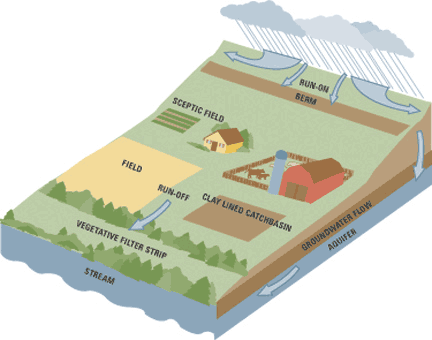
Figure 7.1. Managing surface water pathways
Follow these general guidelines to manage your water pathways:
- Locate the farm site on higher ground than that which surrounds it to avoid or prevent potential run-on from flowing onto the farmstead.
- Locate potential hazards such as manure storage areas away from water flow pathways and potential flood zones on the farm site, or protect storage sites so that contact with surface water is minimized or eliminated.
- Divert run-on waters around the farmstead using natural topography or man-made structures such as ditches, dykes, berms or pipes to avoid water contact with manure, sewage or other potential farm hazards to minimize water contamination. Keep in mind that large-scale diversions are regulated by the Alberta Water Act, and these diversions may change water supplies and soil salinity patterns:
- Reduce the amount of run-on from flowing through yards.
- Modify pathways to reduce the impact that surface water runoff may have for your particular situation. For example, designing and planting a vegetative filter strip in the pathway can slow down water movement and settle out suspended solids. Another option to consider is a constructed wetland. Constructed wetlands will slow down water movement and contain it for a period of time, allowing biological activity to help reduce nutrient levels.
- Reduce water usage by fixing leaks and using water restrictors when appropriate to conserve water and reduce the volume of runoff.
- Collect and store rainwater from roofs to water lawns and gardens or to wash objects on the farm site. Collected rainwater can be made clean enough for these uses by simply settling particles, separating solids, aerating or any combination of these.
- Contain and treat runoff that has come into contact with hazards:
- Collect water that contains excess nutrients in a catch basin and use as fertilizer in the field.
- Plant vegetative strips near riparian areas or ditches to settle sediments, filter, dilute and absorb nutrients.
- Collect, contain and properly dispose of water that has pesticides, petroleum or other non-biodegradable hazards appropriately.
Manure Storage and Composting Operations
Water that has come in contact with manure or compost can absorb nutrients (of particular concern are phosphorus and nitrogen) as well as pathogens. These substances can contaminate clean surface water or groundwater supplies.
The Agricultural Operation Practices Act (AOPA) includes standards for the siting and construction of solid and liquid manure storages as well as compost storage areas to protect water quality. Surface water control systems are constructed to prevent runoff from leaving these storage areas. For more information, refer to the AOPA Standards and Administration Regulation listed at the end of this chapter.
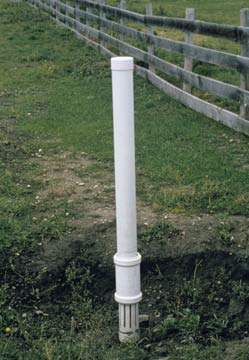
A clean water inlet pipe collects clean run-on water upslope of a livestock yard and discharges it below the yard through a drain outlet
Courtesy of ARD
Animal Facilities
Planning the livestock yard to minimize the amount of run-on (using topography, roofs, gutters, trenches or water diversions) will keep the yard drier and reduce the runoff produced. Siting of short term and long term animal facilities is regulated in AOPA. The livestock yard should be sloped for drainage, and runoff should be diverted to a collection area to be stored. A two-stage collection system works well, with the first shallow basin being used to settle out solids, with the runoff continuing on to a deeper holding basin. This runoff, along with the solids taken from the shallow settling basin, can be spread on fields as fertilizer since it is full of nutrients. It may also contain pathogens of which some are killed with time by sunlight or soil bacteria. An alternative would be to use vegetative filter strips or constructed wetlands to settle sediments and reduce nutrient losses into nearby water resources.
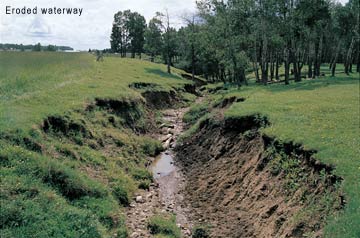 |  | 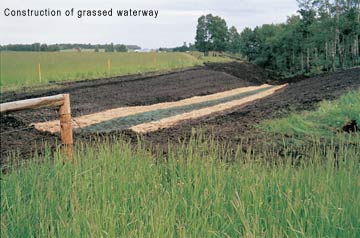 |
| . |  |  |
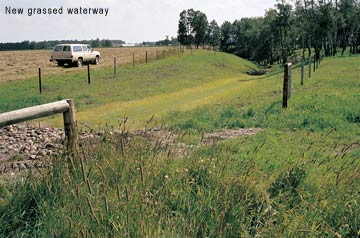 |  |  |
Constructing grassed waterways or vegetative strips can help control water erosion and treat water
Courtesy of ARD |
Disposal Sites for Mortalities
Be aware of the risks involved in handling dead animals and the runoff coming from burial or compost sites as it may contain pathogens as well as nutrients. The runoff should be stored and used as fertilizer on fields where there will be no contact with animals.
Proper disposal of dead animals is important to control disease transfer and to limit scavenging by wildlife as outlined in the Livestock Diseases Act. Arrange for pickup by a rendering plant, burn in an approved incinerator or compost or bury mortalities as outlined in the Destruction and Disposal of Dead Animal Regulation. For more information, refer to the Livestock, poultry and farm animal mortalities section of Chapter 8.
Silage Storage
Silage leachate or runoff contains many nutrients. When large quantities are released into water bodies or soil, oxygen can be depleted, killing bacteria, fish or plants. Silage leachate is also acidic and may corrode metals or concrete, or dissolve soil minerals such as iron and manganese into soil water, which can then enter groundwater. Surface water and groundwater may also receive unwanted organisms such as moulds or bacteria which can produce deadly toxins if the plant material is not at optimum moisture conditions for producing silage.
Depending on silage moisture levels, leachate may occur from the storage area or from runoff due to precipitation. If the silage cover is in good condition, precipitation should not be contaminated and can simply be directed away from the silage storage area.
If leachate does occur, it should be collected in a non-metallic, vented storage area. Deadly gases such as hydrogen sulfide can form if the leachate mixes with manure on-site. Treat the leachate using aeration, dilution or neutralization methods or use as a fertilizer in the field. When fertilizing fields with silage leachate, use amounts that will not burn crops, deplete soil oxygen levels or migrate into watercourses. Another option is to use silage leachate as added moisture when making compost. Aerobic composting bacteria use the nutrients in the leachate and the pH is returned to non-acidic values.
Diposal Field Systems
Both run-on and runoff should be considered when operating or locating septic systems such as disposal fields or open discharge systems. These systems rely on aerobic (oxygen-using) bacteria in the soil to filter nutrients, so they do not leach into groundwater. If the field becomes waterlogged from excessive run-on or use, then the bacteria cannot get enough oxygen. When this occurs, nutrient levels may increase and reach groundwater or surface water. The bacteria may also end up in the groundwater or clog soil pores. Overloading a septic field also creates risks associated with increased runoff. For more information, refer to Chapter 9.
The pathways to and from the septic systems should be studied carefully; keeping in mind that rainwater from roofs, patios and driveways should not discharge into the same area. Any runoff that has been in contact with the area should be collected and used as fertilizer.
Emergency Plan
Every farmstead needs an emergency plan, which outlines the location of hazardous materials, emergency equipment, telephone numbers and necessary clean-up instructions. The plan gives those living on the farmstead guidelines to follow for minimizing potential environmental damage to the site, as well as protects those living on the site and in the surrounding community. For more information about emergency planning and the steps necessary to minimize environmental risk and ensure the safety of others, refer to the Appendix.
Legislation
Producers should be aware of the following pieces of legislation that pertain to managing surface water. For more information on the legislation, refer to Chapter 12 of this manual.
Federal Legislation
Fisheries Act
Provincial Legislation
Environmental Protection and Enhancement Act
Waste Control Regulation
Agricultural Operation Practices Act (AOPA)
Standards and Administration Regulation
Safety Codes Act
Private Sewage Disposal Systems Regulation
Alberta Private Sewage Systems Standard of Practice 1999
Water Act
Water (Ministerial) Regulation
Livestock Diseases Act
Destruction and Disposal of Dead Animals Regulation
For More Information
All Alberta government offices may be reached toll-free by dialing the Rite Line: 310-0000
Alberta Agriculture and Forestry
Publications: 780-427-0391
Alberta Government Library: 780-427-2985
- Beef Herd Management Reference Binder and Study Guide 807-1 (book loan)
- Keep a Clean Image: Livestock and Water (video loan)
- Manure and Riparian Management in the 21st Century (video loan)
Ag-Info Centre: 310-FARM (3276)
Alberta Environment
Publications: 780-427-2700
- Focus on Water Conservation
- Water Act Fact Sheets
Groundwater Information Centre: 780-427-2770
Alberta Municipal Affairs
Safety Services: 1-866- 421-6929
- Alberta Private Sewage Systems Standards of Practice Handbook
Agriculture and Agri-Food Canada
Publications: 613-759-6610
Agriculture and Agri-Food Canada – Prairie Farm Rehabilitation Administration
Publications: Contact your regional office
- Protecting Your Shorelands for Better Farming and Ranching, and Healthier Fish Habitat
- Water Quality Matters Fact Sheets
Alberta Cattle Feeders’ Association
Publications: 403-250-2509
- Alberta Feedlot Management Guide
Cows and Fish - Alberta Riparian Habitat Management Society
Publications: 403-381-5538
- Along the Water’s Edge (video)
- Caring For The Green Zone: Riparian Areas and Grazing Management
- Cows and Fish Fact Sheets
- Riparian Areas: A User’s Guide to Health
- Riparian Health Assessment for Lakes, Sloughs and Wetlands Field Workbook
- Riparian Health Assessment for Streams and Small Rivers Field Workbook
|
|